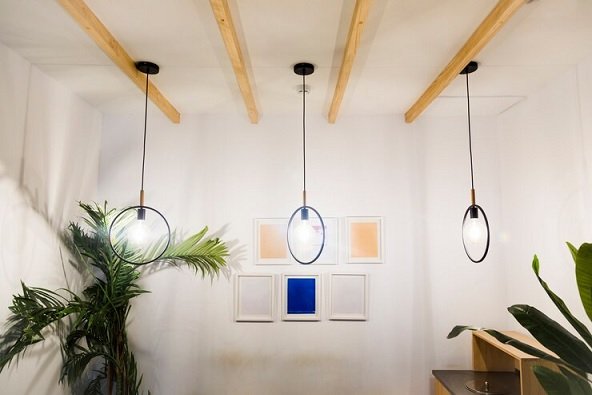The interplay between ceiling lights or wall lights is undoubtedly one of the crucial elements in achieving a good combination of both visual quality and homogeneity in the living area. This crux of deciding the proportion between the artificial and natural lighting can prove to be the factor which can transform a room and give it a new ambience along with added functionality.
Ceiling Lights: Anchoring the Space
Wall or architectural sconces are perfect accent lights to complement the ceiling lights as an integral part of every room’s lighting scheme. They are the leading ones that give us the primary source of lighting, and they do so by creating an atmosphere of the pleasant warm ligh, spreading all over the space. Taking in consideration the luxury minimalist chandeliers and complicated ornaments most designers are capable of everything and specialize in any kind of lamps the choice of ceiling lights can significantly impact the overall aesthetic. When selecting ceiling lights, consider the room’s size, the desired level of brightness, and the style that complements the existing decor.
Wall Lights: Enhancing Ambiance
To the other, live lights are a good target in terms of having intimate and focused light sources. They come in different styles and shapes that can accentuate specific parts or architecural features, while at the same time can serve as a decoration to create a homely, cozy atmosphere. So for a hallway your corridor oblique lightings like wall sconces, you can be certain of creating a touch of elegance while directional wall lights can illuminate artwork or create a warm, ambient glow in a living room.
Balancing the Duo
To achieve the perfect balance between ceiling lights and wall lights, consider the following tips:To achieve the perfect balance between ceiling lights and wall lights, consider the following tips:
Proportion: Be sure that window treatments are cohesive in terms of color, design, and pattern with both the walls and the floor covering. On the other hand, oversized or undersized accessories can achieve this oversized effect.
Complementary Styles: Decide on the fixtures that get along with your design theme (e.g. modern, traditional or industrial) if you wish to build a different style of lighting. This will be reflected in a consistent and appreciable architectural style.
Layered Lighting: Illuminating with both both ambient and task lighting to provide dimension. The main light source is the ceiling lights, while the wall lamps can be deployed to offer emphasis to certain areas or facilitate the setting up of cozy and intimate moods.
Dimmability: Exploring the idea of having dimming controls that are responsible for the wattage of the bulbs can be the perfect solution for setting up in any situation.
Through combining and mixing ceiling and wall lights in a way that will create a space that will be in a state of harmony and will free your spirit from any visual limitation.

